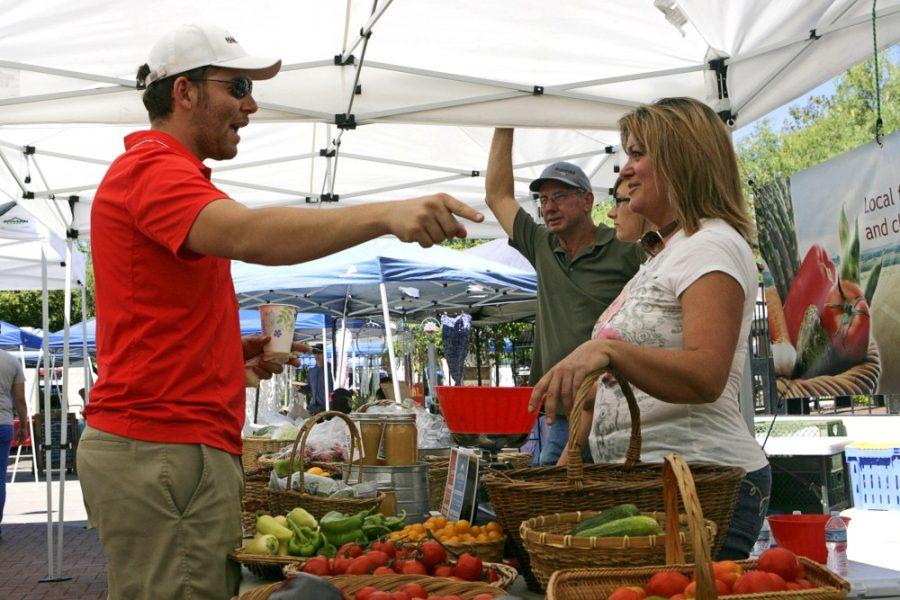“Los Angeles, San Francisco, even Austin, but Tucson?” my out-of-state roommate asked, apparently bewildered. “What food scene does Tucson even have?”
He questioned Tucson’s foodie scene after he read about Tucson’s recognition as a United Nations Educational, Scientific and Cultural Organization World City of Gastronomy. His surface skepticism wasn’t unwarranted, though—without Michelin five star-rated restaurants lining every street, Tucson doesn’t seem like much of a foodie town at all.
The Old Pueblo’s significance as a foodie town doesn’t come from the same superficial elements as other cities like New York and Los Angeles, though. Our role as a gastronomy capital doesn’t hail from a plethora of world-renowned chefs (though we’re not really lacking in that department)—it comes from a historical commitment to sustainability and locally-sourced food.
Before this distinction was even bestowed on Tucson, two UA students-turned-entrepreneurs saw an opportunity to turn this town back into a sustainable community that cares about where their food comes from.
Clayton Kammerer and Jon Hall graduated from the Eller College of Managment’s McGuire Entrepreneurship Program in 2011. As students, they envisioned creating an organization that could market local farmers and food vendors to help them sell their products directly to the consumer.
“Being a big fan of food and small business, and having grown up in Montana and Oregon,” Kammerer said. “I saw an opportunity for a better blueprint for farmers markets here in the desert.”
The launch of FoodInRoot started with only five vendors. FIR now coordinates 450 vendors across nine different farmers markets in Tucson.
Kammerer said that the journey has been long, but full of growth and excitement. He proudly noted that his company is coming up on its fourth anniversary of operation this November.
Despite his commendable accomplishments, Kammerer’s humility shines through in his work. He said that the designation of a UNESCO World City of Gastronomy was essentially an internationally recognized label placed on what has already been a locally-minded food culture in Tucson—FIR just aimed to help it grow.
“I don’t think we’ve been any more part of the role than any one else,” Kammerer said. “Tucson’s been under the radar as far as foodies and the connection between what they eat and what they do.”
One of FIR’s most popular farmers’ markets pops up at St. Phillip’s Plaza every Saturday and Sunday morning. Vendors fill the spread-out bazaar with local food and crafts, and you can see the sense of community present with every smiling face.
On a muggy Sunday morning at the St. Phillip’s Plaza Farmers Market, one vendor in particular caught my eye. In an extra-long tent sat behind a plaza fountain, farmer Clay Smith casually sold his produce with an inviting grin on his face.
Smith also graduated from Eller and fresh out of school, he decided to take his business acumen and apply it to farming—something he said Southern Arizona desperately needed more of.
“The food scene—local agriculture scene—it was very new to start and it has grown quite a bit,” Smith said. “It’s a bit of a food desert out there.”
Smith has seen his farm, called Sleeping Frogs Farm, grow considerably since he first started farming eight years ago. Along with participating in Tucson’s various farmers markets, Sleeping Frog Farms sells its produce to local co-ops and fresh markets like Time Market.
FIR has helped propel this shift in food culture by bridging the gap between farmer and consumer.
“Farm to table” has become an overused phrase, often used to advertise the sustainable food trends of big city restaurants, but FIR and the Tucson food/agricultural community really take its meaning to heart.
Kammerer continues to move forward with his quest to expand FIR’s business.
“To be honest, we’re not specifically limited to Tucson—we’re kind of scaling outside of the Tucson valley, but potentially even beyond that,” Kammerer said.
If you’re skeptical in the possibilities you might have as a college student to eat locally, don’t fret. UA students don’t need to seek out distant farmers markets and co-ops to start eating more sustainably—FIR holds a farmers market on the UA Mall every Wednesday from 10 a.m. to 2 p.m. and one every Friday at Banner – University Medical Center during the school year.
Follow Sean Orth on Twitter.









